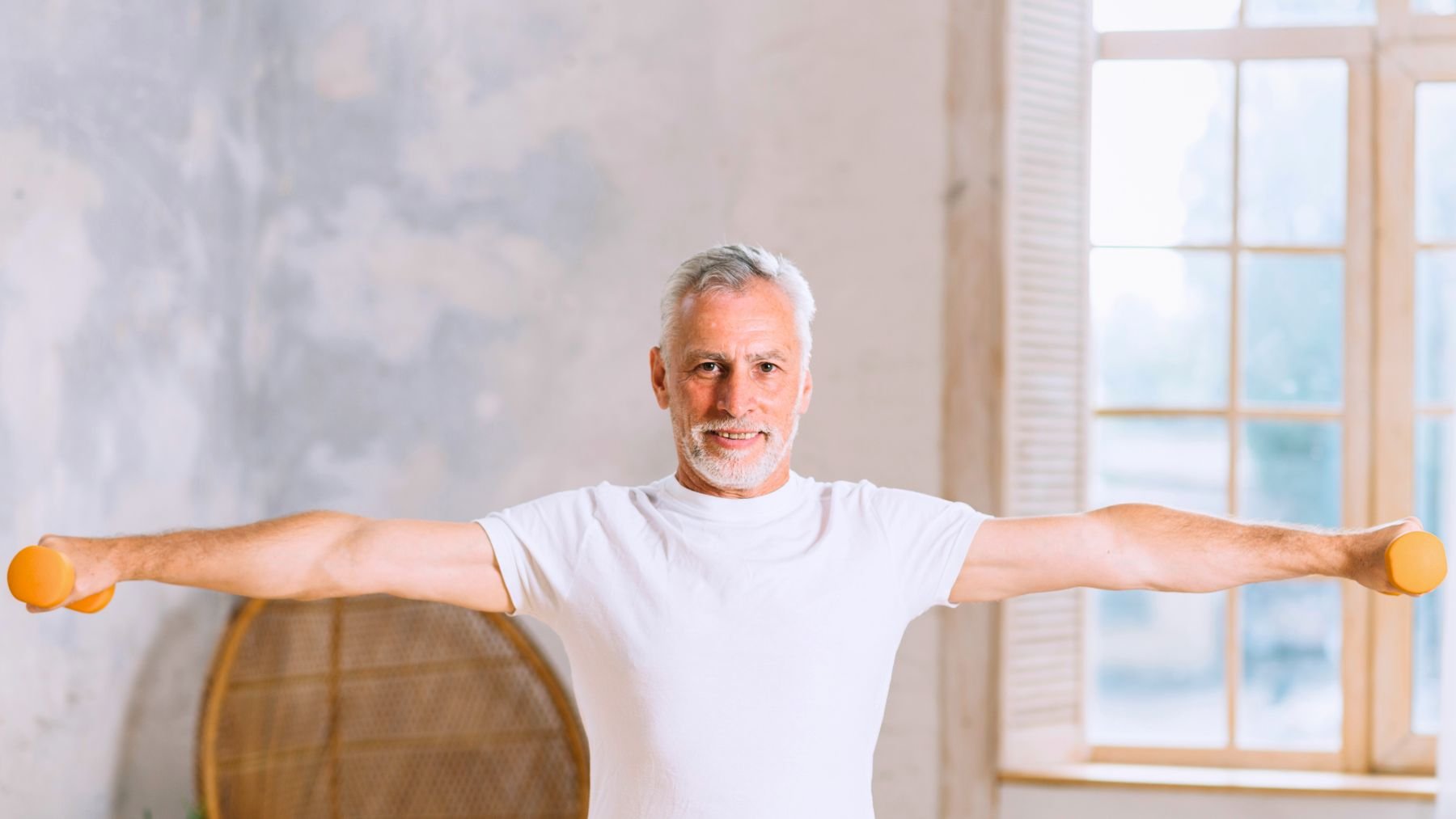Aging often comes with slower movement, weaker muscles, and memory lapses, but research shows these changes are not inevitable. Exercise, especially aerobic activity and strength training, can help protect both the body and the brain.
According to Mayo Clinic experts, physical activity helps reduce the buildup of senescent cells, aging cells associated with chronic disease. Dr. Nathan LeBrasseur, director of the Robert and Arlene Kogod Center on Aging at Mayo Clinic, explains that even modest daily activity can improve muscle, bone, and cognitive function in older adults. Let’s look at the main benefits of exercise after 65 and simple ways to add it into your life.
Why seniors should do aerobic and strength training
No pill can slow down the biology of aging, but exercise acts as the closest alternative. Aerobic activity such as walking, cycling, or swimming increases blood flow and oxygen delivery, supporting heart and brain health. For seniors, this means sharper thinking, steadier balance, and a lower risk of cardiovascular disease.
Strength training is just as important. Lifting light weights, using resistance bands, or practicing bodyweight exercises helps preserve muscle mass, which naturally declines with age. Stronger muscles mean greater mobility, fewer falls, and more independence in daily life. Resistance work also improves bone density, reducing the risk of fractures and osteoporosis.
Beyond physical benefits, both aerobic and resistance exercise impact the brain. Studies suggest that activity stimulates neuroplasticity, the brain’s ability to form new connections. This translates into better short-term memory, faster reaction times, and protection against cognitive decline. Dr. LeBrasseur notes that 30 minutes of exercise daily may support not only physical strength but also cognitive health and emotional resilience.
Another key advantage is energy. Many older adults feel fatigued as they age, but regular training improves circulation, muscle efficiency, and sleep quality. Better rest and higher energy levels create a positive cycle, making it easier to stay active.
How to bring exercise into daily life after 65
You don’t need a gym membership to start training and make it a habit. Here are some practical ways to include aerobic and strength training in your daily routine:
- Walk every day: A 30-minute walk at a comfortable pace strengthens the heart and improves circulation. Breaking it into two 15-minute sessions works just as well.
- Use resistance bands: Lightweight and affordable, bands can be used at home to work arms, legs, and core muscles.
- Do chair exercises: Seated leg lifts, torso twists, or arm raises build strength safely, especially if you have mobility issues.
- Climb stairs: Using stairs instead of elevators adds aerobic effort and strengthens the lower body.
- Swim or do water aerobics: It’s gentle on the joints and improves endurance, flexibility, and coordination.
- Practice balance drills: Simple moves like standing on one foot or shifting weight from side to side help prevent falls.
Make sure to start slowly and listen to your body. Choosing activities that feel enjoyable makes it easier to stick with them, whether it’s gardening, dancing, or walking with friends. As Mayo Clinic experts emphasize, exercise is one of the most reliable ways to maintain strong muscles, sharp thinking, and steady energy in your senior years.
